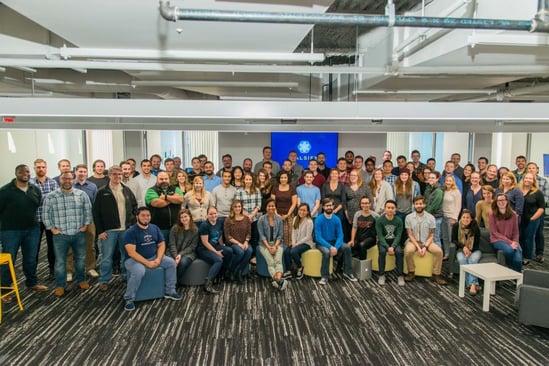
We announced yesterday that Salsify raised a $30 million C round. We're excited about how this funding will allow us to grow our company and our platform. So far, we have about 130 employees, and closed our last year at over 3x YoY ARR growth. We're currently in scale mode (we're hiring!).
I’m very proud of the value we’ve delivered to our customers and the success that our employees have made possible. But rather than write a “ra ra!” post talking about the success of the company, I wanted to look back over the last 4.5 years and think about what things, in retrospect, we did and didn't do so well to get us here. You can read my full $30M Series C Retrospective, but here are some highlights:
Mistakes.
Looking back, many of the mistakes we've made that actually hurt had the shape of, “we should have done THAT earlier!” In my longer post I share my thoughts on those. One example where we have actually put a lot of time and thought into is how we communicate between departments and different levels of the company. Still, in retrospect we could have done much more to proactively updating internal communication patterns to match company growth stage.
Internal communication has broken down several times while scaling. Looking back, as a basic pattern I'd say things broke down roughly every time we doubled. When we were 10 people, we all worked around one conference room table, bumping knees underneath it (except for Emily & I, who are too short to have had that problem). When we were 20 we spread out, and all of a sudden the product team wasn't listening to every discussion about customer messaging, and we didn't do a good job connecting the dots at first. But even at 20 we still had “Burger Friday” and had most of our meals together.
Between 20 and 40 people that broke down, and there were even fewer built-in touchpoints for connecting people across the company. Between 40 and 80 all of a sudden we had a bunch more managers, meaning a layer between execs and most employees, and had to compensate for that. We've always corrected, but after the fact, and there's always been some damage to mitigate. This is one that we're still focusing on actively, but feel that we could have done better transitioning between each phase.
Wins
Many of these wins have the opposite shape of the mistakes, which is to say we chose specific areas of the company to invest in early, and they've paid off big time. Again, I share a longer list in my $30M Series C Retrospective but it's worth sharing the one that impacts our customers most here.
Over-hiring in customer success. I'm far from the first person to write about this, so I'll just say that customer success matters so very much in the early days. With superior support, your customers will love you and even forgive product shortcomings as your build out your whole solution. Even public SaaS companies run break-even (or even negative) gross margins on customer success for this reason (meaning they invest money into it as a cost center vs. treating “professional services” as a profit center in the old Oracle/IBM model). Our renewal and expansion rates are best-in-class for an enterprise B2B SaaS business, and global brands are willing to talk about us publicly and rate us publicly (which rarely happens with enterprise businesses). We have a great product, but those wins would not be possible without substantial investments in customer success.
I hope you found this perspective helpful, whether if you are a founder or an employee working to bring about change at your organization or for your insdsutry. Read the full post.
Written by: Rob Gonzalez
Rob Gonzalez (he/him) is one of the co-founders of Salsify and is also the co-host of the “Unpacking the Digital Shelf” podcast. Previously, he ran product management and marketing for Cambridge Semantics.
Recent Posts
5 Ecommerce Tips To Help Marketers Enter the New Year Stress-Free
How Many Digital Sales Channels Do Shoppers Review Before Purchasing Products?
What the Data Says About Consumer Interest in AI Shopping Agents
Subscribe to the Below the Fold Newsletter
Standing out on the digital shelf starts with access to the latest industry content. Subscribe to Below the Fold, our monthly content newsletter, and join other commerce leaders.

.svg)